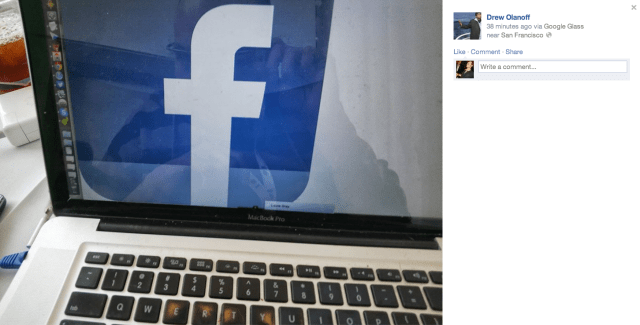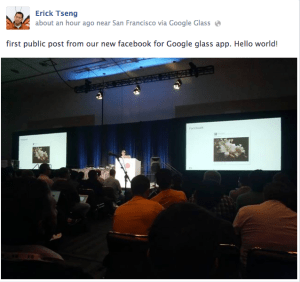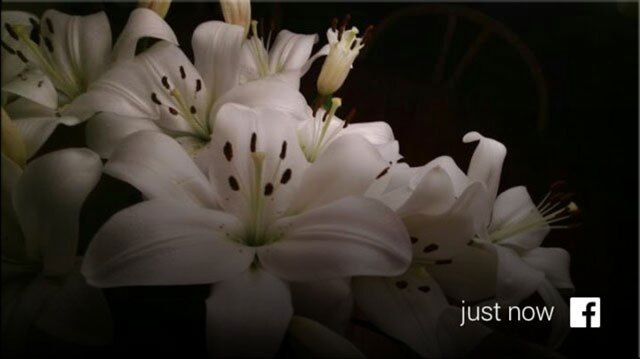Google and Facebook working together? They’re actually friends, in no small part thanks to Erick Tseng. The former Android leader, now Facebook’s mobile product manager, today launched the official Facebook For Google Glass app. Here he tells me about how a tiny team designed the app around simple photo sharing and Facebook’s strengthening relationship with Google.
Josh Constine, TechCrunch: What was it like getting Facebook involved in the Glass program?
Erick Tseng, mobile product manager for special projects at Facebook: It was great. I used to work at Google [as the lead product manager on Android until 2010]. We’re very close, but I have a personal relationship with a bunch of folks on the Glass team. It came out of a pretty informal chat with folks on that team. We both quickly came to the conclusion that it would be pretty awesome to get Facebook on Google Glass.
It all developed in just a few months. Two engineers built the whole app. There were no formal designers. Just me project-managing it. We got early access to some developer hardware and Google Glass prototypes. We had a very small team build a prototype [of our app]. We liked what we saw, showed it to Google, they liked what they saw, then we productized it. It was fun to work on a new platform like Google Glass.
“Our starting principle was the user experience”
TechCrunch: What was it like working on a fast-moving development platform like Google Glass? How do you think about what features to include in Facebook For Glass?
Tseng: From a developer perspective, our starting principle was the user experience. What functionality makes the most sense when you have a device like Glass sitting in front of you? What we came up with was the idea that we wanted to do things very simply and easily. You don’t want a lot of text. We started playing with it and saw photos as a very powerful user interaction with Glass. It’s natural that when you take photos on Glass, you want to share them with the people you care about. We wanted to make the photo uploading process as quick and easy as possible, so we focused on that use case.
As we were playing with Glass, we were really impressed with voice functionality, so we added in the ability to speak a photo description that gets added to your photo.

TechCrunch: There’s a lot of other functionality you could have added. Did you run into constraints on the Glass platform?
Tseng: To be fair, it wasn’t all that much of a constrained platform, considering we wanted to do photo sharing. Photo-taking on Glass is very fast. It’s just one click to share, and one more to decide who to share with. It’s going to be an evolving platform and we’re excited to see what Google has for developers. My expectation is that over time a lot of the user functionality will get easier.
“When you have an opportunity like this, you jump in with eyes wide open”
TechCrunch: What was it like working on a moving target, where you might not know what the device your app eventually launches on would be able to do?
Tseng: It was fun! When you have an opportunity to jump in on an emerging category like this you jump in with eyes wide open, knowing there will be some dynamics before things start settling in. We went in fully aware that this is very early and still in development, but the opportunity to build on Google Glass was quite thrilling.
We always like to think of massive scale and how we can increase happiness in our users live. With Glass, even though it’s very early, it does feel like the natural evolution of where computing is going. As it evolves from the desktop to phones to computers we wear all over our bodies, it behooves us to start only on any technology like this so we get an early glimpse of what users want.
TechCrunch: There’s no way to read the feed or get notifications on Facebook For Glass right now. Did you consider the balance between building an immersive experience and one that might interrupt and overwhelm people?
Tseng: I think it really comes down to how a device like Glass will continue to evolve in our daily lives and the role it will play. We wanted to keep it simple, but it was a no-brainer that photos are a very enjoyable use case. Starting with that was a very straight-forward decision. We’re excited to see Google’s feedback and get people to tell us what they think, what they wish the device could do in addition to photo uploading and we’ll take that into consideration.
 TechCrunch: What’s it like being at Facebook and working with Google? Is there any of the animosity people think there is?
TechCrunch: What’s it like being at Facebook and working with Google? Is there any of the animosity people think there is?
Tseng: We love working with the Google Glass team. From the very first conversation I had with the team when we said “Wouldn’t it be great if we did this?” to launch was just a couple months. That’s a testament to both teams working very closely together to get this shipped.
More broadly, it’s often forgotten that we have a great relationship. Facebook is one of most popular Android apps today. We already work very closely on that experience as well. And then Home is the latest manifestation of that relationship.
TechCrunch: What about your previous arguments about data portability and who can import whose email contacts or social graph?
Tseng: Data importation? With the Glass team that never came up at all, so I haven’t even thought about that in this context.
TechCrunch: Is wearable computing the future of social networking?
Tseng: No, I think social networking is a broader concept. It permeates everything we do in our lives. Wearable computing is a way of helping you connect more closely and see context about what’s around you, but I think it’s a misnomer to say it represents the future of social networking.
TechCrunch: Are there specific Google Glass features you’d like to see?
Tseng: Oh yeah! I’d like to keep some of those secret for now. We want to surprise folks when they come out. This app is really our first foray into anything like a Glass form factor. We expect to learn a lot.

